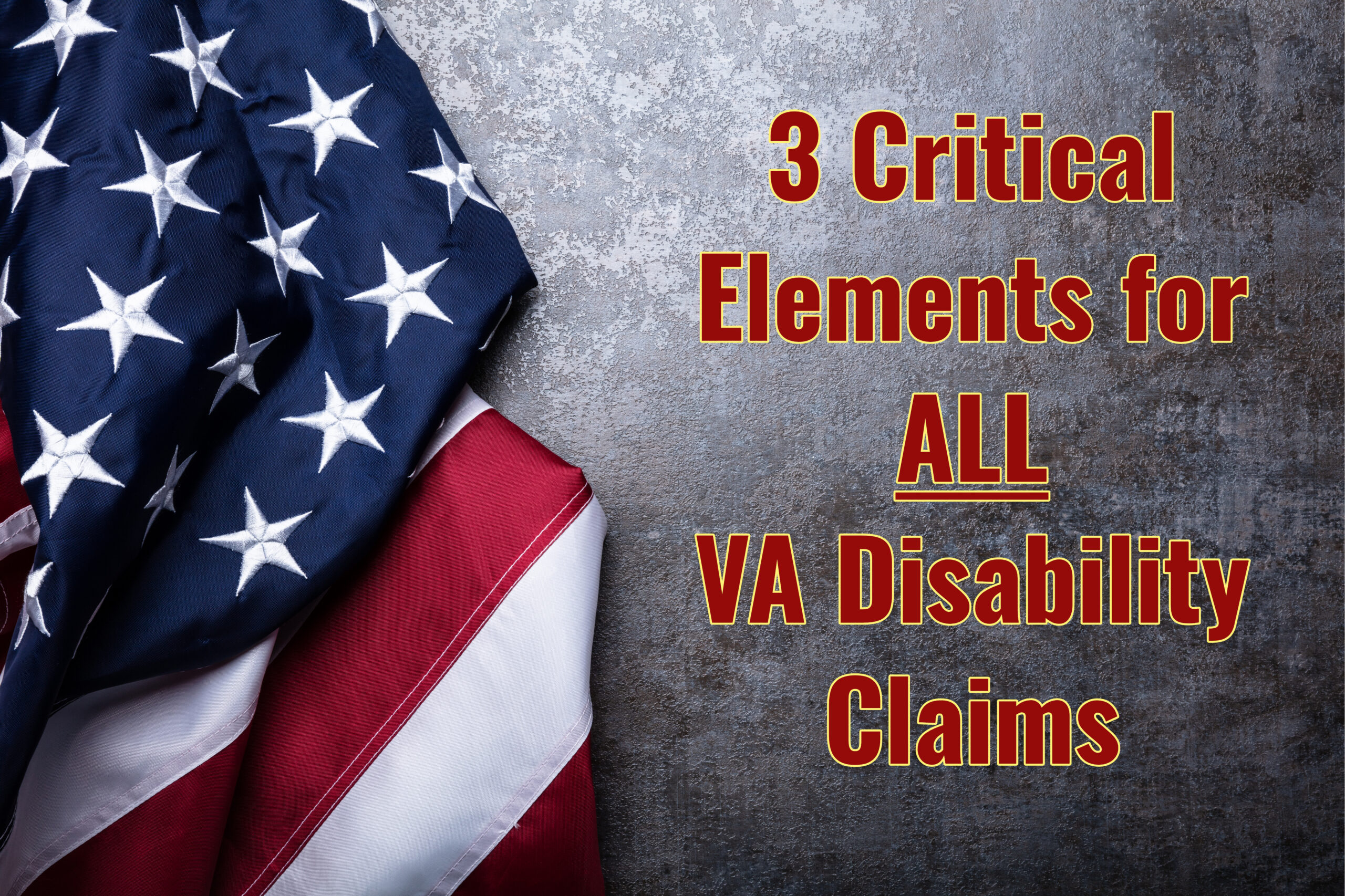How to Write a Winning VA Buddy Letter with the New VA Form 21-10210 – Lay & Witness Statement (FREE Fillable Buddy Letter Template with Examples!)
Hi Veterans, Brian Reese here from VA Claims Insider, and in this post, I’ll be breaking-down the brand-new VA Form 21 10210 – Lay & Witness Statement (aka, “VA Buddy Letter”) to help support your VA disability compensation claim.
The VA recently launched a new standardized VA Buddy Letter form to be written by a spouse, co-worker, boss, or fellow service member to help you prove your disability condition before the VA.
Using the new VA Form 21 10210, I created a free fillable Buddy Letter example template for you to download and tailor for your use:
>> Click HERE now to download my FREE Fillable Buddy Letter Template for Veterans! <<
You can still use the VA Form 21-4138 Statement in Support of a Claim, but you might want to give the new form a try—it’s a better flow and makes more sense for the buddy writing the statement in your behalf.
I’ve written before about the power of a competent and credible VA Buddy Letter to help you prove your in-service injury or incident to get your VA disability conditions service connected.
Simply put, a competent and credible Lay & Witness statement, especially from a first-hand witness, can be the difference between winning and losing your VA disability claim…
You might also like the following Blog posts:
Do VA Raters Rely on VA Buddy Letters to Help Decide Your VA Claim?
The short answer is: YES!
VA Raters rely heavily on secondary sources of information to help fill-in the gaps between your current disability condition and your active-duty military service, especially in the absence of evidence from your time in the military (which most of us lack in some way, shape, or form).
Why?
Because many veterans don’t have ANY evidence in their active-duty Service Treatment Records (STRs) of their current disability conditions.
You might not have a medical diagnosis or even subjective complaints of a disability condition in your military service records.
This is very common veterans, because many of us didn’t go to the doctor every time we had aches and pains—in fact, it’s discouraged while on active duty—you don’t want to be that guy or gal who’s always at sick-call, on a profile, or falling out of formation.
There are other factors, too.
Perhaps you didn’t even realize you had a disability condition while you were in the military, and thus, it didn’t get medically diagnosed until years later.
For example, although I had major sleep issues and insomnia in the military, I thought it was because of stress and my various mental health conditions.
I didn’t realize that my sleep issues were likely due to Obstructive Sleep Apnea (OSA) until 8 years after leaving the military.
Heck, I didn’t even know what Sleep Apnea was until a few years ago!
If this sounds like you at all, I can literally read the VA’s denial letter…
“There’s no evidence in the veteran’s Service Treatment Records (STRs) of any in-service … mental health issues, sleep apnea, or migraine headaches…”
Of course, there isn’t VA!
Because we didn’t go to the doctor on active duty.
Listen up fellow Veterans: If this is you, and you’ve been out of the military for more than 12 months, you need to ensure you’ve got your ducks-in-a-row before you apply for VA disability compensation, especially if you’ve been previously denied VA benefits.
3 Elements You Must Prove in All VA Disability Compensation Claims

Before we go any further talking about Lay & Witness Statements, I want to cover the 3 critical factors you must prove in all VA disability claims:
- (#1) Medical diagnosis of a disability condition (this can be in Service Treatment Records (STRs), VA medical records, OR any private records, but it needs to be in a medical record somewhere).
- (#2) Your disability condition was caused or made worse by your ACTIVE-DUTY military service (“Nexus”) OR it’s proximately due to or aggravated by ANOTHER service-connected disability rated at 0% or higher for secondary service connection.
- (#3) Current symptoms of the disability condition into the present day, aka, “Severity of Symptoms” (How is your disability condition limiting/affecting your work, life, and social functioning?)
First, you MUST have a medical diagnosis if a disability condition in a medical record.
The medical diagnosis does NOT have to be in your Service Treatment Records (STRs), but it must be somewhere, in either VA medical records or private medical records.
If you think you have a disability condition, but don’t yet have it medical diagnosed, GET YOUR BUTT TO THE DOCTOR!
Without a medical diagnosis, you’re dead-in-the-water, and your VA disability claim will get denied.
Second, you must be able to prove to the VA that your disability condition (if medical diagnosed) was caused or made worse by your active-duty military service (this is the “Nexus” which means link or connection) OR it’s proximately due to or aggravated by ANOTHER service-connected disability rated at 0% or higher for secondary service connection.
If you’ve ever logged into your eBenefits account, clicked the “Disabilities” tab on the left-hand side of the screen, and seen various disability conditions that say, “Not Service Connected,” the VA denied you service connection.
The VA is telling you they couldn’t find a “Nexus” for service-connection on at “at least as likely as not” basis, which is a required element by law to be eligible for VA disability benefits.
Guess what?
The VA makes mistakes every day, all day, and they’re trying to help you, but you’ve got to help them, too!
Difference Between a Medical Nexus Letter and a VA Buddy Letter
There are two things you can do that will really help you prove service connection, even if you’ve already filed or been denied:
#1. A Nexus Letter, aka, Independent Medical Opinion to help prove the medical connection between your current disability and your military service.
>> Click HERE to find top doctors who write Nexus Letters for Veterans <<
#2. A competent and credible Lay & Witness Statement from a first-hand witness, preferably a spouse or fellow military member you served with.
Third, your final VA rating percentage for a particular disability conditions comes down to your “Severity of Symptoms.”
Generally, the more severe your symptoms, the higher the VA rating for that disability condition.
You can see what I mean by paying close attention to the symptoms and keywords tied to various VA disability rating percentages in 38 CFR, Part 4, the Schedule for Rating Disabilities.
When writing your personal statements and Buddy Letters, you want to explain in plain English your current symptoms of the disability condition into the present day, aka, “Severity of Symptoms.”
Specifically, how is your disability condition limiting/affecting your work, life, and social functioning?
VA Buddy Letter Example with 3 Key Elements Explained

In this section, I reveal and explain a VA Buddy Letter example along with the 3 key elements to help you structure a winning lay statement.
A competent and credible Buddy Letter should be structured as follows:
PART ONE: HOW DO YOU KNOW THE VETERAN?
In this first section, you need to explain how you know the Veteran.
Here is an example of how to write this section:
“My name is John Doe, and I’m the husband of veteran [INSERT VETERANS NAME]. I’m writing this statement on behalf of veteran [INSERT VETERANS NAME]. I have known [VETERAN] since 1999, because we were high school sweethearts. Over the past 20+ years, we have interacted daily. We live together.”
PART TWO: WHAT YOU WITNESSED OR ARE WITNESSING NOW
In this second section, you need to explain in detail what you witnessed or are witnessing in regard to the event or incident. You do NOT need to explain every detail.
Here is an example of how to write this section:
“When I first met [VETERAN], before she entered active-duty military service, she was happy, fun loving, and had no mental health issues whatsoever. All of that changed in July 2004, when she was raped by another service member while TDY to Lackland Air Force Base, San Antonio, Texas. It became very evident to me that she suffered from severe PTSD, depression, and anxiety. I encouraged her to get help and seek treatment many times over the years, but because she was an officer, and worked with senior military leaders, she was afraid of retaliation and reprisal.”
PART THREE: THE VETERAN’S CURRENT SEVERITY OF SYMPTOMS AND ANY WORK/LIFE IMPAIRMENT
In this final section, you need to explain the veteran’s current symptoms of the disability condition as YOU know them to be. Again, you do NOT need to explain every detail, just the things you know about.
Here is an example of how to write this section:
“Throughout our marriage, I witnessed her suffer from severe depression, anxiety, dry mouth, insomnia, nightmares, relationship problems, trust issues, severe anger, panic attacks 3-5x per week, memory problems, and sexual dysfunction, among many others. The rape mentioned above by a fellow service member has affected her so much that it is my belief she cannot have a normal relationship with anyone, anymore, which was a huge reason why we’ve had numerous marital challenges over the years. I am 100% certain that her PTSD, depression, and anxiety are due to the rape.”
That’s it.
You’re not writing a novel here veterans – VA raters are really busy!
Keep it short and sweet and think LESS is MORE!
Again, if you want my free fillable Buddy Letter template with examples for you to download and tailor for your use, simply click the link below:
>> Click HERE now to download my FREE Fillable Buddy Letter Template for Veterans! <<
About the Author

Brian Reese is a VA disability expert, former military officer, and founder of VA Claims Insider – “The Most Trusted Name in Education-Based Resources for Veterans.”
His frustration with the 8-step VA disability claims process led him to create “VA Claims Insider,” which provides U.S. military veterans with tips, strategies, and lessons learned to win their VA disability compensation claim in less time.
Brian is also the CEO of Military Disability Made Easy, which is the world’s largest free searchable database for all things related to DoD disability and VA disability, and has served more than 6,000,000 military members and veterans since its founding in 2013.
He is a former active duty Air Force officer with extensive experience leading hundreds of individuals and multi-functional teams in challenging international environments, including a combat tour to Afghanistan in 2011 in support of Operation ENDURING FREEDOM.
Brian is a Distinguished Graduate of Management from the United States Air Force Academy, Colorado Springs, CO and he holds an MBA from Oklahoma State University’s Spears School of Business, Stillwater, OK, where he was a National Honor Scholar (Top 1% of Graduate School class).
